Article One: Anatomy of the Room
Part 4
Okay, we understand the room layout, the placement of the opening to get into the room and the parts of the room we have to and use to clear, and why and how enemies may use it to their advantage – the tactical significance of the anatomy. Let’s discuss things that will catch you off guard. What tactical obstacles are we faced with?
Tactical obstacles are usually seen as physical objects that diminish the capabilities of the entry team. They usually increase the risk of an entry team member becoming injured or killed. There are a few obstacles that I am going to note. And I am only going to keep it in-line with the physical anatomy of the room, no psychological obstacles or human barriers. The first obstacle is a half-wall.
A half-wall is a partition dividing one segment of a room from another – ordinarily dividing a smaller segment from the larger area of the room. It tends to protrude out from a main structural walls causing a visual obstruction as to what is around it. This is an issue. You cannot clear the room without clearing the half-wall. It may be short or tall. You may be able to clear it from above or have to go around it to clear it.

Next: furniture. Activities of daily living or working are not taken place in an empty room like you see in basic “shoot houses”. In fact this form of “empty room syndrome” trains bad habits. Prepare yourselves for rooms filled with furniture and household objects. They’ll trip you up, you will slide, fall and get hurt. Furniture is also a visual obstruction – you can’t see what is behind it. When you’re working around the room you need to take this into account. Think up and down. Under beds, above you in ceiling shafts.
Furthering this, furniture is often flammable – flashbangs, live rounds (especially tracer) and other combat applications can set a room alight. Furniture can “trap” flashbangs negating their best effect, furniture can “hide” explosives and boobytraps. An enemy combatant can hide in deep angles of the room so once entry occurs they can engage when friendly forces are deeper within the room, creating an ambush/kill zone. Furniture can be used to block and obstruct entry, allowing effective door ambushes against the entry team. Furniture is a tactical obstacle.
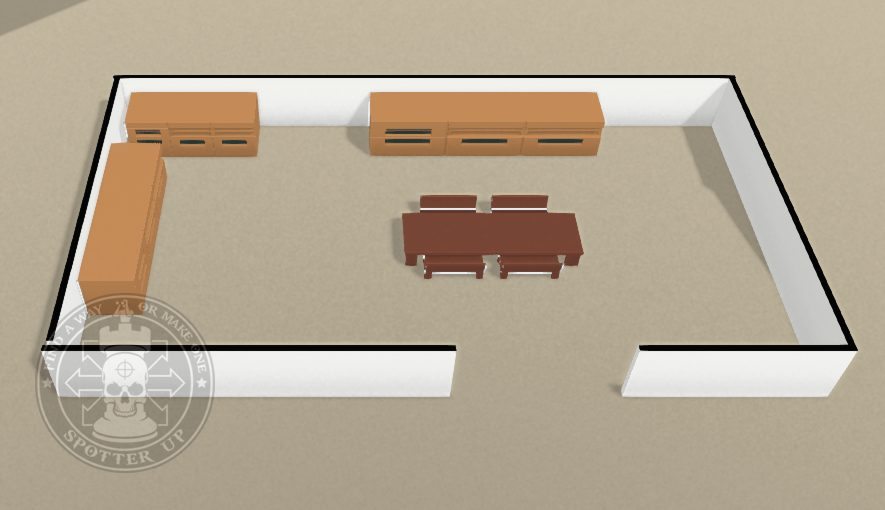
How do you take this obstacle? Low height obstacles can be bypassed or jumped over. High height obstacles can be ducked under. Medium height obstacles can be passed under, over, around but usually are bypassed. Full height obstacles tend be bypassed by going around them. You make a targeted approach depending on the size and shape of the object. If it’s low, I can come from above it and shoot down. I can drop a grenade over the top. I’m safer in this position than jumping around it where someone will be expecting me. Either way I’m going to try and get multiple angles on threat, including backup angles in case I lose the fight initially. Si?
Righteo, now let’s look at some linear layouts. A fourway intersection is an area which divides itself into four linear subareas or a hallway with two linear subareas branching horizontal to it. It is basically a crossroad. Tactical problems are apparent – you can potentially occupied space to your left and right and you have space to cover to your front. Do I hear “Da%$”? I certainly think I do. I hate these intersections. They’re trouble.
There are plenty of methods to take them. I might end up rambling on about that in a future topic. I might not. But you see that they’re a problem, have a plan and don’t let them catch you off guard. Be prepared.
The next linear layout is a T-intersection. There are many arcs to cover but they only come from the left and right. That’s good news. This also means you can have near-simultaneous coverage of both sides of the corridor, galley or hallway. A tactic called cross-covering is often employed for this. However, this technique as with a fourway carries great risk. You are put into a small space where multiple people can be injured from little action – for example the enemy putting a few rounds down the hallway and taking out multiple people, a grenade landing in the middle of you or a suicide vest (SVIED) deciding to go bang. Problems.
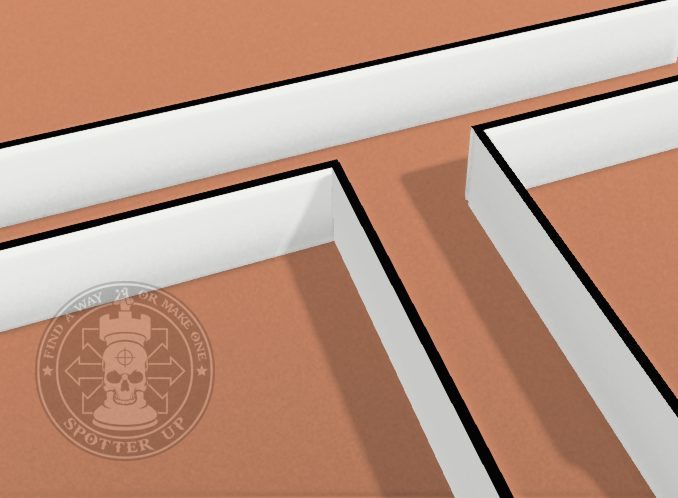
And now to recap.
Obstacles
Half-wall – A half-wall is a partition dividing one segment of a room from another, ordinarily dividing a smaller segment from the larger area of the room and protruding from the main structural walls.
Furniture- Furniture are objects that fill a room, which are used for daily living/working and household purposes. Furniture is also movable so may be used to obstruct entry.
Fourway Intersection – Four offshoots from a central point. This usually creates a crossroad-like intersection.
T-Intersection – A horizontal linear area off-shooting from a central structure/layout. This forms the shape of an alphabetical “T” letter.
There are many more obstacles out there. These are just common ones that catch people off guard. Look around, see if you can find some! Think of solutions as to how you would deal with them.
And finally, it has been a blast writing the Anatomy of the Room. Thank you for reading. The next series will be Entry Philosophy. We will be looking at the entry process of getting into a room, the thinking behind it and the reasoning behind where it can go wrong, and right, including what we’re teaching wrong and what we’re doing wrong globally.
By Rye
CQB-TEAM
Close Quarters Battle
Tactical Education and Motivation
Google anything Close Quarter Battle – You’ll find us!
http://www.facebook.com/CQBteam
(Image courtesy of discovermilitary.com)
[jetpack_subscription_form]

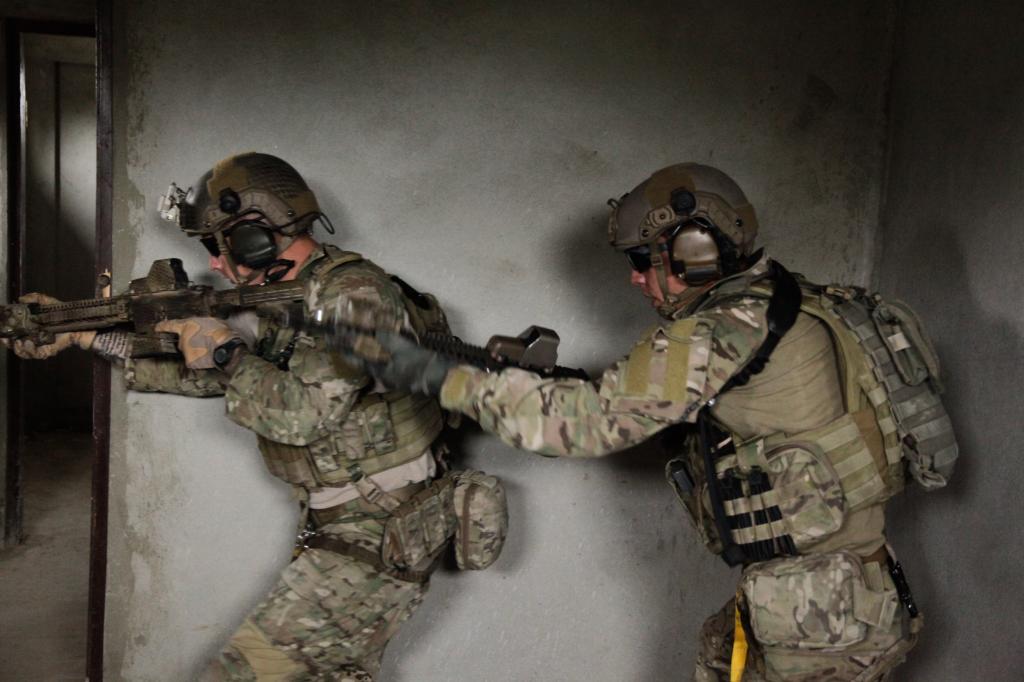
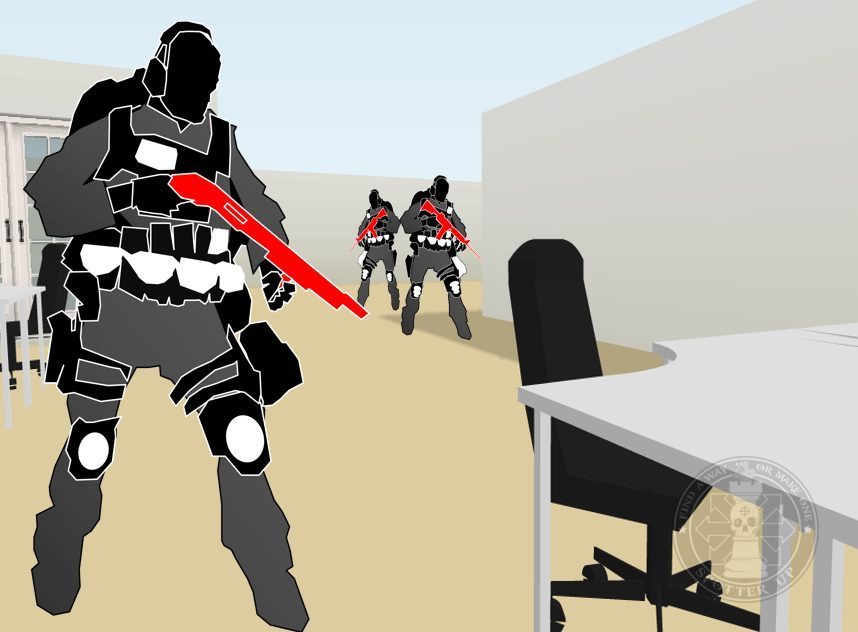
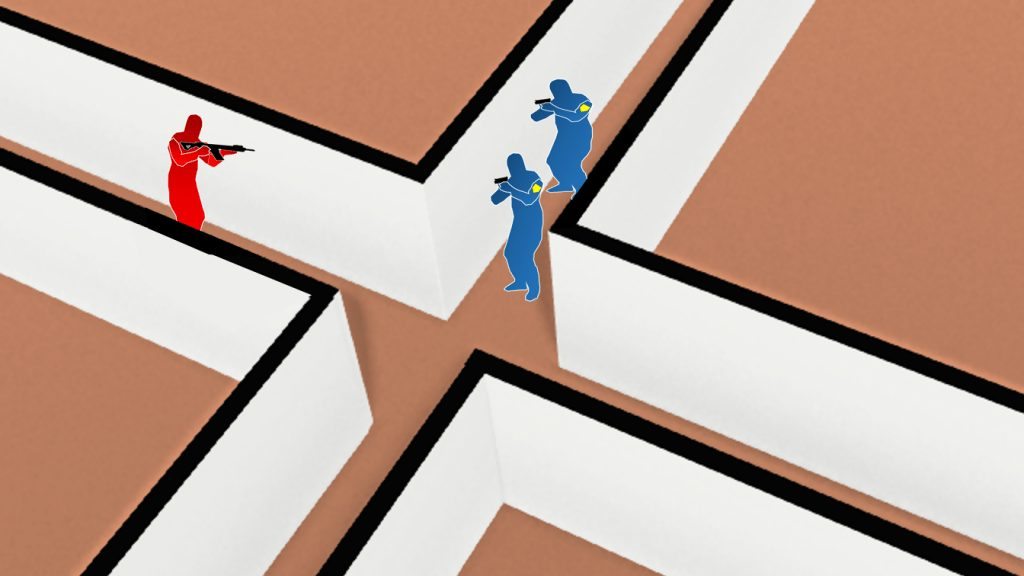
[…] Image credit: Spotter Up […]